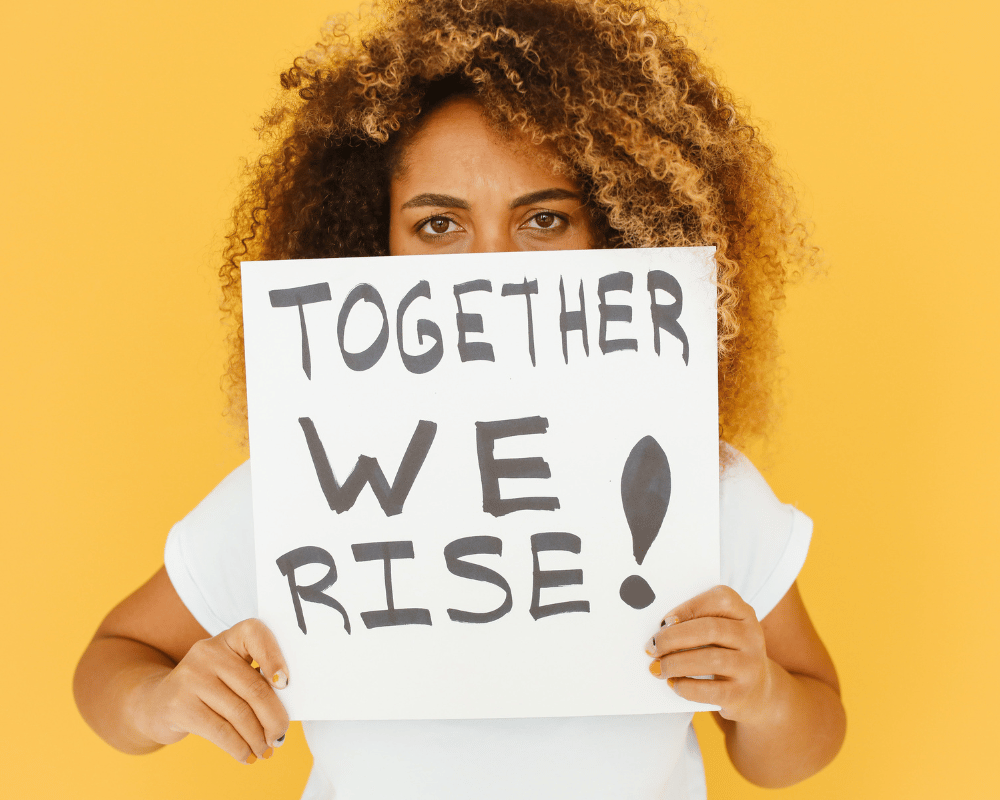Advocacy Through Social Media: Extending Beyond Your Platform
Back in November 2021, millions of Instagram feeds were flooded with stories of pet pictures with the sticker “We’ll plant 1 tree for every pet picture” attached. With over 4 million posts, Plant A Tree advocated for the environment and got the attention of millions of supporters. However, with the surplus of support, Plant A Tree did not have the capabilities to plant all of those trees on their own. Thus, with the overwhelming use of social media, it can be easy to gain support for a cause if your platform is large enough. Although, the real question that should be asked is how do social media users advocate for their cause beyond their screen and within their own communities?

What Social Media is Doing Right
First and foremost, social media is a great jumping off point to start your advocacy journey. With millions of users, there is ample opportunity to gather a community of supporters for your cause. Movements like #MeToo and #BlackLivesMatter has shown the power of social media and how it can amplify marginalized voices. Subsequently, a study performed by MIT showcases how social media can spread awareness and increase access to various resources in developing countries. The focus of the study was to “increase awareness among women [in Egypt] about where to find resources and support for addressing domestic violence.” Utilizing different tactics through platforms like Facebook and WhatsApp, the results showed increases in knowledge of where to find resources, how to get informed, and overall consumption of content through social media. Thus, on the surface level, social media platforms have all of the right components to be an ideal environment for advocates.
Noteworthy Advocacy Campaigns
With all of the right elements aligned, advocacy campaigns can really take off on social media. One of the most notable advocacy campaigns is the ALS Ice Bucket Challenge. Nearly a decade ago, Anthony Senerchia, Pete Frates, and Pat Quinn began the ALS Ice Bucket Challenge to raise awareness for the disease that they were all living with, ALS. The challenge was simple, fill a bucket with ice and water, dump it over your head, post the video on social media with #ALSicebucketchallenge and tag someone you would like to challenge next. Quickly, this challenge became a global phenomenon. Over 17 million people took part in the ALS Ice Bucket Challenge, including celebrities like Dwayne Johnson, Oprah, and Lebron James. Overall, the challenge raised $115 million for ALS! The Ice Bucket Challenge is a prime example of how you can take part in an advocacy campaign through social media while also raising awareness for a greater cause or organization.
All About Slacktivism
Like the saying, not all that shimmers is gold, social media is not always the perfect breeding ground for advocacy campaigns. According to a survey conducted by the Pew Research Center, a majority of the respondents believe that social media can be “a distraction and lull people into believing that they are making a difference when they’re not.” This is where the term “slacktivism” comes into play. Psychologist Mark Travers, in an article published by Forbes, defines slacktivism as “digital support for social or political causes without effort or commitment.” Examples of slacktivism may include, but are not limited to, sharing a post or statement regarding the particular cause at hand with no further action.
A study published by the McMaster Undergraduate Journal of Social Psychology highlights why social media users, specifically millennials, take part in slacktivism. Being driven by guilt and the need for approval from peers were the two standout themes why slacktivism takes place on social media. Thus, not only is slacktivism misleading, it can take a toll on the slacktivist’s mental health. The study showed that consistently having to engage in slacktivism to keep up with a curated online image can cause emotional exhaustion, cognitive dissonance, and less meaningful connections to peers. Overall, it is imperative to not participate in slacktivism in order to avoid posting hollow or misleading content and negate possible tolls on mental health.
Although, prominently within the last few years as social media advocacy has taken off, there has been an added pressure to celebrities and influencers in the limelight, as well. Specifically, fans want to see these “role models” speak out on relevant social and political issues going on in the world. Some may post a link in their bio to entice their followers to donate to a cause or post a lengthy statement on top of a black screen to their Instagram story. This can’t help but raise many questions: are celebrities or influencers with large platforms obligated to speak out about large issues? An even more alarming question is, are we witnessing slacktivism from those influencers who do choose to speak out on their platforms?

Advocates On and Off The Screen
Two prime examples of how using a large platform for advocacy goes beyond social media are America Ferrera and Angelina Jolie. In a 2019 interview with Vogue, America Ferrera dove deeper into the details of her advocate to activist journey through her nonprofit organization, Harness. Tapping into her target market, Harness aims to “create gatherings that give artists in [her] circle ways to make a political impact.” Some of the projects managed by Harness are Protect The Sacred, DEAR Hollywood, Gender Justice Entertainment Hub, and Poderistas. On the other hand, with a more global outreach, Angelina Jolie has been working with the UN Refugee Agency for nearly 20 years. During her time with the UNHCR, Jolie has completed over 60 field missions around the globe and used her “powerful voice to build awareness and support for refugees” under her title as Special Envoy. As her time at the UNHCR has come to an end, Jolie is still making it her mission to advocate for causes that are important to her. This is seen through her promise to engage with “a wider range of actors on a broader set of humanitarian issues” and work “more directly with local organizations.”
What is Your Part?
Looking through a wider lens, Ferrera and Jolie are just two of the many influential celebrities that are putting their advocacy work into action. However, there is more that needs to be done. To enact change, advocacy is needed on a global and local level more than ever. With serious issues like climate change, poverty, reproductive justice, and more, finding where to start may be daunting for the average individual. However, there are numerous ways to make effective advocacy attainable. An important step is knowing your resources and discovering what organizations already exist that support your cause. For example, on the global level, the Global Health Council is the “leading member organization devoted to advancing global health priorities by uniting advocates, implementers, policy makers and other stakeholders.” On the local level, The Lesniak Institute for American Leadership is dedicated to developing the next generation of leaders and advocates through teaching effective advocacy strategies and uplifting local grassroot organizations. The Institute supports and promotes advocacy for four main causes: criminal justice, social justice, animal welfare, and environmental protection. Thus, supporting organizations like these through donations, attending events, or volunteering are a huge way to help enact change in your local and national government.
Furthermore, staying up to date on local legislation in your area is also a key factor in effective advocacy. A few ways you can stay up to date on your local legislation is utilizing your state legislature website, subscribing to newsletters from local legislatures or law firms, and following local media outlets. Staying informed on which senators and assembly people represent your area is also a key component in effective advocacy. Thus, following your representatives on all platforms will help provide timely updates on topics directly affecting you! Consuming news stories from social media or television broadcasts are easy ways to advance your knowledge on current issues but ensuring you do your research to fact check those stories is imperative. Overall, there are numerous ways beyond social media platforms to advocate for an issue without having to drastically change your lifestyle. The question to ask yourself is, how can I extend my advocacy beyond my screen?
About the Author: Sophia Sacewicz is the PR and Social Media Specialist Intern at the Lesniak Institute for American Leadership. Sophia is a student at Kean University and is currently studying Communication and Public Relations.
Categories
More Stories
- The Negative Impact Of The Government Shutdown
- Slacktivism: A Real Term for Unreal (Ineffective) Efforts
- The Hidden Cost of AI: Why It’s Not as Green as You Think
- Art as a Catalyst for Social Change: Harnessing Creativity for Advocacy
- Inspiring Change: A Step-By-Step Guide to A Campus Activism Event
- Advocacy Through Social Media: Extending Beyond Your Platform
- Unwrapping the Future: The Growth of Plastic Film Recycling


